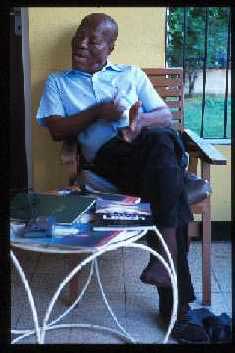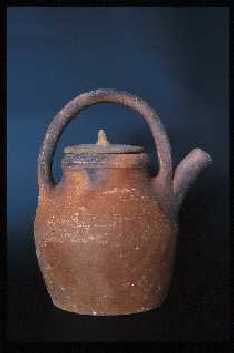Jamaican Pottery

Cecil Baugh is the best known studio potter in Jamaica. Now in his late eighties he first learned pottery in the 1930s from traditional women potters in Kingston. Cecil Baugh has a special relationship with Great Britain as he spent a year at St Ives in 1947 and is proud to see himself as a pupil of Bernard Leach. He founded the ceramic department at the Edna Manley College of Art and initiated the flourishing studio pottery movement in Jamaica
Cecil Baugh talks about different ways of making pots
M.V. What about your parents? What did they do?
C.B. They were farmers and the other, my elder brother, was a carpenter and then he an engineer, and I took up potting on my own. I living with these two women, working in clay, making yabbas and I helped them a lot, and by doing so I got a bit of clay and I rolled the clay into a coil and I made little bowls and other things, childre’s toys and this was put aside and sold for me at Christmas time and I call it my fees I should say. And then I just took to them making yabbas, little yabbas, larger yabbas, monkey jars and water pots that they used a lot in those days and the drip jars and there was a male potter around there. He was in the area around. I take a look at him when he is making the larger things such as garden pots and drip jars and from there I started to make the monkey jars and drip jars and flower pots, then I find myself moving away from them by doing things like vases.

M.V. You were experimenting?
C.B. Yes, very much informed at that time.
M.V. So, in that road, were there other potters working in that road? You worked with two potters, two women, but there were other potters in that road, in that area?
C.B. Not in that section, no. Lower down on the road, they were on the road. They were another section where worked four or five potters, another section probably have six but the greatest section of pottery was on the Mountain View Avenue then and on the Spanish Town Road. Then you also had the Kingston potters, the Kingston potters have been important, then the Spanish Town potters they were doing the African technique which is different from the Kingston technique though they were called yabbas but they were done differently. Like MaLou works with a keke and in Kingston we don’t use the keke. There is a completely different process in Kingston of walk around and I could show you a process that I had a workshop over here, really I jig around the whole of the pot.
